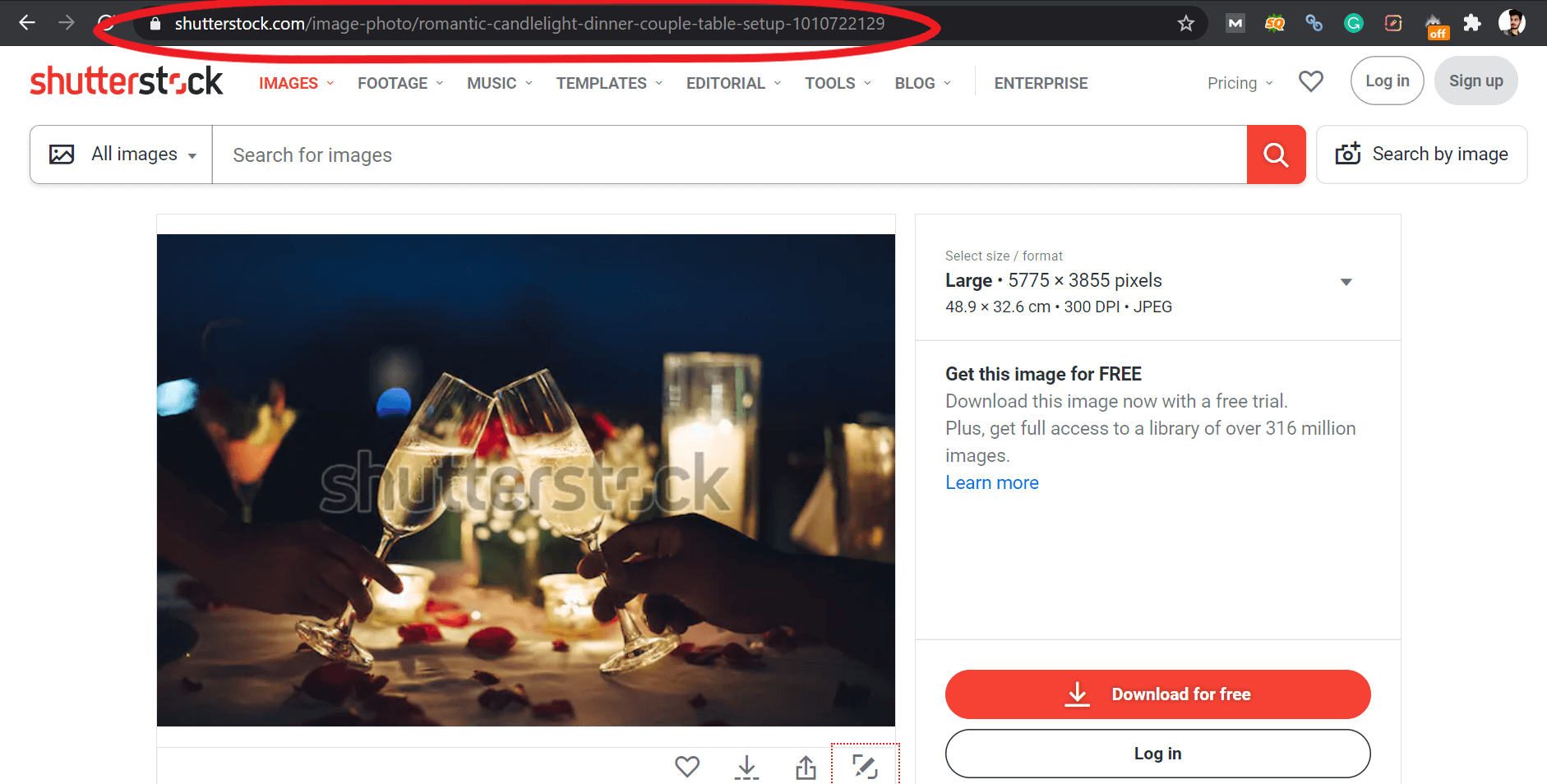If you’ve ever browsed Shutterstock and fallen in love with a photo, you know how tempting it is to want a copy you can use freely. But here’s the catch: Shutterstock’s images come with watermarks to protect the photographers’ rights, and downloading them without proper licensing is both illegal and unethical. In this guide, we’ll explore legitimate ways to obtain high-quality, watermark-free images for your projects, as well as clarify what watermarks are and why they’re there. Whether you’re a designer, blogger, or business owner, understanding this process can save you time, money, and potential legal trouble.
Understanding Shutterstock Watermarks and Why They Are Used

When you browse Shutterstock, you’ll notice that all preview images are overlaid with a prominent watermark—usually the Shutterstock logo or some other identifying mark. These watermarks serve a crucial purpose: they protect the rights of photographers and content creators by preventing unauthorized use of their work. Think of watermarks as digital security tags—they make it clear that the image isn’t licensed for free use and discourage copying or sharing without permission.
Here’s why watermarks are essential for Shutterstock and similar stock photo platforms:
- Protection of Intellectual Property: Photographers and artists invest time and creativity into their work. Watermarks ensure they retain control over how their images are used and prevent theft or misuse.
- Encouraging Proper Licensing: Watermarked images act as a preview, enticing potential buyers to purchase the rights to use the high-quality, watermark-free version legally.
- Revenue Generation: The sale of licenses generates income for content creators and stock platforms, supporting the ecosystem that keeps high-quality images available.
It’s important to understand that removing watermarks without proper licensing is both unethical and illegal. The watermark serves as a reminder that the image is protected by copyright law, and using it without permission can lead to legal consequences. The right way to access watermark-free images is through proper licensing, which ensures that creators are compensated for their work. This not only respects their rights but also guarantees you a high-quality, legitimate image that won’t cause problems down the line.
Legal Ways to Download Shutterstock Photos Without Watermarks

So, you’re eager to use stunning Shutterstock photos without those pesky watermarks, but you want to stay within the lines legally. That’s a smart move! Watermarks are there to protect photographers’ rights, so using images without proper licensing can land you in hot water. Luckily, Shutterstock offers legit ways to get high-quality images for your projects, and here’s how you can do it.
First and foremost: always go the official route. There are no shortcuts when it comes to respecting copyright laws. The good news is, Shutterstock provides several straightforward methods to access their images legally and watermark-free.
Purchase a Single Image
If you only need a handful of images, buying images individually is a simple and direct solution. When you purchase a license for a specific photo, you get a high-resolution, watermark-free version that you can use as needed. Just find the image you love, click on the “Buy Photo” button, and complete the checkout process. Once purchased, you’re free to download the image without a watermark and use it in your project.
Subscribe for a Set Number of Downloads
Shutterstock offers subscription plans that give you access to multiple images per month. Subscriptions are perfect if you need images regularly, as they often come at a lower cost per image. Once you subscribe and download an image, it’s yours to use without watermarks, provided you adhere to the license terms.
Extended Licenses for Commercial Use
If you plan to use images in large-scale commercial projects, such as billboards, merchandise, or mass distribution, consider purchasing an extended license. This license grants you broader rights and ensures you’re fully compliant with copyright laws. Remember, licensing is the legal backbone that lets you use images confidently and without worries.
Keep in Mind:
- Always read the license agreement associated with each image.
- Do not attempt to remove watermarks yourself—that’s illegal and against Shutterstock’s policies.
- Never download images from unofficial sources or third-party sites claiming to offer free Shutterstock images—these are often illegal and risky.
By sticking to these legal methods, you not only respect photographers’ rights but also avoid potential legal issues down the line. It’s a win-win: you get beautiful images, and creators get the credit they deserve.
Using Shutterstock Subscription Plans for Legitimate Downloads
If you’re serious about consistently using Shutterstock photos, investing in a subscription plan is the most reliable and cost-effective way to access high-quality, watermark-free images. Let’s break down how these plans work and why they’re your best bet for legitimate downloads.
Understanding Shutterstock Subscription Options
Shutterstock offers various subscription tiers tailored to different needs:
| Plan Type | Number of Downloads | Cost per Image | Best For |
|---|---|---|---|
| Standard Subscription | 10, 20, 30 images per month | Lower rate per image | Frequent content creators, bloggers, small businesses |
| Enterprise Plans | Customizable, with larger download allowances | Negotiated rates | Large teams, agencies, or high-volume users |
Why Choose a Subscription?
Subscribing unlocks a steady stream of high-quality images at a predictable cost. Once you download an image under your plan, it’s yours to use legally without watermarks, as long as you adhere to the license terms.
How It Works
- Select a plan: Choose a subscription tier that fits your needs.
- Download images: Access and download high-resolution images directly from Shutterstock’s platform.
- Use legally: All images downloaded under your subscription come with the necessary licenses for commercial or personal use, without watermarks.
- Manage your account: Keep track of your downloads, renewal dates, and billing info easily via your account dashboard.
Maximizing Your Subscription
- Plan your downloads ahead to get the most value out of your subscription.
- Always check the license specifics for each image, especially if used commercially.
- Cancel or change your plan at any time if your needs evolve.
Final Thoughts
Using Shutterstock’s subscription plans is a safe, legal, and cost-effective way to access a vast library of images. It supports creators and ensures your projects remain compliant with copyright laws. So, whether you’re building a website, creating marketing materials, or working on a personal project, subscribing is your best route to download beautiful, watermark-free photos legitimately.
How to Purchase and Download High-Resolution Photos Without Watermarks
If you’ve been exploring Shutterstock and found that perfect image, you’ll notice that free previews come with those pesky watermarks. So, how do you get the full, high-quality version without the watermarks? The answer is straightforward: purchase the image through Shutterstock’s licensing process. Here’s a simple step-by-step guide to help you get those high-res, watermark-free photos:
Step 1: Create a Shutterstock Account
If you haven’t already, sign up for a free account on Shutterstock. Having an account makes purchasing and downloading images much easier and allows you to keep track of your downloads and licenses.
Step 2: Choose Your Image
Browse or search for the perfect photo. When you find one you love, you’ll see a preview with a watermark. This preview helps you ensure it’s exactly what you need before making a purchase.
Step 3: Select a Licensing Option
Shutterstock offers different licensing plans, like:
- On-Demand Packs: Buy a set number of images for a fixed price.
- Subscriptions: Download a certain number of images per month at a lower cost per image.
Pick the plan that suits your needs. If you’re only downloading a few images, on-demand packs might be more cost-effective. For regular use, a subscription could be your best bet.
Step 4: Purchase the Image
Once you’ve selected your plan, click the “Buy” button. You’ll be prompted to enter your payment details. After completing the transaction, the image becomes available for download in high resolution without watermarks.
Step 5: Download the High-Resolution Image
Navigate to your download section, find the purchased image, and click the download button. The file will usually be in a high-quality JPEG or PNG format, ready for your project.
Extra Tips:
- Keep your licenses organized: Store your downloaded files and license info safely.
- Check image resolution: Make sure the download is in the resolution you need for your project (print, web, etc.).
And that’s it! Purchasing and downloading high-resolution, watermark-free images from Shutterstock is straightforward once you understand the licensing process. Plus, you get peace of mind knowing you’re using images legally and ethically.
Tips for Avoiding Watermarks When Downloading Shutterstock Images
Now, let’s talk about how to steer clear of watermarks altogether. If you’re looking for ways to get images without watermarks without crossing any lines, it’s crucial to understand the do’s and don’ts. Here are some practical tips to help you avoid watermark issues:
1. Always Use Official Download Options
The most reliable way to get watermark-free images is by purchasing or licensing them through Shutterstock’s official channels. Never try to “remove” watermarks using editing software, as this is illegal and violates copyright laws.
2. Subscribe or Buy Credits
If you frequently need images, consider subscribing to a Shutterstock plan or buying image credits. These options grant you legal access to high-resolution images without watermarks. Plus, they often come at a lower cost per image than single downloads.
3. Use Free Alternatives When Possible
If budget is a concern, explore free stock photo websites like Unsplash, Pexels, or Pixabay. Many of these sites offer high-quality images that are free to use without watermarks, as long as you adhere to their licensing terms.
4. Be Wary of Unofficial Download Methods
Some websites or tools claim to offer watermark-free Shutterstock images for free or at low prices. Be cautious! Many of these are illegal, violate Shutterstock’s terms of service, or could expose your device to malware. Always use legitimate channels.
5. Understand Shutterstock’s Licensing Terms
Familiarize yourself with the licensing agreements. Knowing what you’re legally allowed to do with purchased images helps you avoid unintentional infringement. When in doubt, contact Shutterstock support for clarification.
6. Avoid Using Unlicensed or Unauthorized Sources
Downloading images from unauthorized sites or using cracked versions can lead to legal trouble and poor-quality images. Stick to genuine Shutterstock downloads or reputable free sources.
Summary
In short, the best way to avoid watermarks is to always go through official channels—whether that’s purchasing a license, subscribing to a plan, or choosing free, licensed images. This way, you ensure you’re respecting artists’ rights and protecting yourself from legal issues while getting top-quality images for your projects.
Common Mistakes to Avoid When Downloading Shutterstock Photos
When you’re diving into the world of Shutterstock photos, it’s easy to make some common mistakes that can lead to frustration or even legal trouble. Let’s go over a few pitfalls to watch out for so your experience stays smooth and legit.
1. Not Checking the License Type
Shutterstock offers various license options, including Standard and Enhanced licenses. Each has specific restrictions on usage, like how many copies you can make or whether you can use the images for commercial purposes. Failing to verify the license type can cause issues down the line, especially if you use the photo in a commercial project without the proper license.
2. Downloading Watermarked Previews for Final Use
Many beginners mistakenly think that the watermarked preview images are the final version. Remember, those watermarks are there to protect Shutterstock’s content. Using watermarked images in your final product is not only unprofessional but also illegal. Always ensure you have the licensed, watermark-free image before publishing or sharing.
3. Relying on Unofficial Download Methods
Some folks try to find ways around the official Shutterstock platform—like using third-party tools or browser hacks. These methods can be risky, often illegal, and may expose your device to malware. The safest way is always to use Shutterstock’s official channels and authorized downloads.
4. Ignoring Image Quality and Resolution
When downloading images, pay attention to the resolution. Low-quality images may seem tempting because they’re quicker to download or free, but they won’t look professional in print or large digital formats. Always choose the highest resolution available for your needs.
5. Forgetting to Save Your License and Purchase Details
Keep a record of your licenses, receipts, and download history. This can come in handy if you ever need proof of licensing or if you want to revisit your purchases. Shutterstock provides a dashboard where you can manage your downloads and licenses—make sure to utilize it!
By avoiding these common mistakes, you’ll ensure that your use of Shutterstock photos remains ethical, legal, and of high quality. It’s all about respecting the creators’ rights and making sure your projects look professional and legitimate.
Alternatives to Shutterstock for Free and Legitimate Watermark-Free Photos
If you’re on a budget or just prefer to explore more options, there are plenty of legitimate sources where you can find free, high-quality, watermark-free photos. Let’s look at some popular alternatives that can help you find the perfect images without breaking any rules.
1. Unsplash
Unsplash is a favorite among creators for its vast library of free, high-resolution photos. All images are released under the Unsplash License, which allows you to use them for commercial and non-commercial purposes without attribution (though giving credit is appreciated). The photos are professional, diverse, and constantly updated.
2. Pexels
Pexels offers a huge collection of free stock photos and videos. The platform has a user-friendly interface, making it easy to find images for any project. Like Unsplash, Pexels photos are free to use, and attribution isn’t required but appreciated.
3. Pixabay
Pixabay provides over a million free images, vectors, and illustrations. Their license allows for use in commercial projects without attribution. It’s a great resource for creative commons images that are safe to use in almost any context.
4. FreeImages
This platform offers a wide selection of free stock photos, though some images may require attribution. Always check the license details on each image before use.
5. StockSnap.io
StockSnap.io has a large collection of free, high-resolution images with a simple license that allows use without attribution. The site also features a handy search tool to find images quickly.
Quick Tips for Using Free Stock Photos Safely:
- Always double-check the license: Even on free sites, some images may have restrictions.
- Give credit when possible: It’s good etiquette and sometimes a requirement.
- Avoid overly generic images: Unique photos stand out and make your project more memorable.
While free sources are fantastic, always respect the licensing rules to avoid copyright issues. These platforms provide a wealth of safe, legitimate options for your creative needs without watermark worries.
Conclusion and Best Practices for Using Shutterstock Images Legally
Using images from Shutterstock can significantly enhance your projects, but it’s crucial to do so responsibly and in accordance with copyright laws. Always ensure you have the proper license before downloading and using any image. Remember, watermarked images are only for preview purposes and should not be used in final projects. To stay compliant, follow these best practices:
- Purchase the appropriate license: Choose the license type that fits your project’s scope—whether it’s standard or enhanced. This grants you legal rights to use the images as intended.
- Read and understand Shutterstock’s licensing terms: Familiarize yourself with the usage restrictions to avoid unintentional violations.
- Avoid unauthorized downloads or hacks: Using third-party tools or methods to bypass watermark removal is illegal and can lead to legal consequences.
- Properly attribute images when required: Some licenses may necessitate attribution; always give credit when applicable.
- Maintain records of your licenses: Keep copies of purchase receipts and license agreements for future reference.
| Best Practice | Why It Matters |
|---|---|
| Use only licensed images | Ensures legal compliance and protects you from copyright infringement lawsuits. |
| Respect licensing restrictions | Prevents misuse that could limit your rights or result in legal penalties. |
| Keep documentation | Provides proof of licensing in case of disputes or audits. |
In summary, always prioritize legal and ethical use of Shutterstock images to safeguard your projects and reputation. Proper licensing not only keeps you compliant but also supports the creators whose work you admire and rely on.

